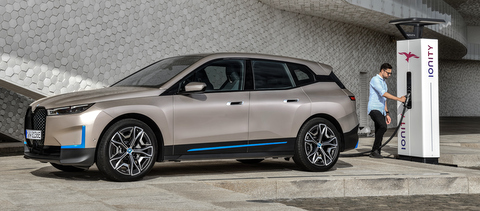Differences and Similarities That Can Change Your Car Life
Nearly every household owns a vehicle in the United States. In 2018, the Edison Electric Institute estimated that more than 1 million electric vehicles (EVs) were currently traveling U.S roads. That number has continued to rise. While conventional cars still dominate the market, energy and environmental activists hope that will change in the near future.

Electric vehicles and conventional (internal combustion engine—ICE) vehicles have one main difference—their fuel source. Drivers of electrified vehicles can plug in their car to a power source to charge a battery, though some are hybrids that use an internal combustion engine in combination with an electric motor. Conventional vehicles, on the other hand, rely on gas as their source of fuel.
While this is a noticeable difference, there are some lesser-known differences between EVs and conventional vehicles as well.
3 Lesser-Known Differences Between EVs and Conventional Vehicles
There are apparent differences between EVs and ICE vehicles that most people know, like cruising distance, energy source and available models. However, there are some you may not know.
Cost of Operation

The overall operating cost of an EV is much less than that of a conventional vehicle. Typically, with a conventional vehicle, you’ll pay an average of $1,117 per year to operate a car. For EVs, that cost is about $485 per year–significantly less.
Part of that is maintenance costs, which are lower for EVs. Conventional vehicles need to have oil and transmission fluid changes and other maintenance operations that EVs don’t require.
Incentives
If you’ve ever owned an ICE vehicle, did you get an incentive of any kind? Probably not. There are many federal, state and local incentives when buying and using an electric car.
The government offers rebates as an incentive to “go green” with your vehicle. While EVs tend to cost more upfront, rebated will often offset that cost.
Vehicle Selection

Conventional vehicles have a wider vehicle selection. More vehicle manufacturers are trying their hand at electric cars, but the selection is still minimal compared to conventional vehicles.
Right now, there are about 30 models of plug-in electric vehicles on the market. The number is expected to increase as more models appear. Still, if someone is looking for a specific vehicle model, it may not be available in an all-electric model yet.
Similarities Between EVs and Conventional Vehicles
While there are many differences between EVs and conventional vehicles, there are some similarities between the two.
Effects of Cold Weather

Cold weather affects both EVs and conventional vehicles. As the temperatures plummet, fuels in conventional vehicles condense and shrink in volume. The volume isn’t much, but it is a difference that can affect fuel economy.
EV batteries also have trouble in the cold. Cold weather can deplete electric car batteries, reducing their driving range.
CO2 Emissions
It’s a well-known fact that conventional vehicles release carbon dioxide emissions. In addition to CO2, much of the smog and haze seen in cities results from the thousands of cars and trucks running on gasoline and diesel.
Once EVs hit the road, they produce zero carbon dioxide emissions. However, during production, CO2 emissions are still released. Plus, emissions may be produced by their electrical power source. The total amount of emissions is significantly less than that of conventional vehicles, but both still release CO2.
Shifting to Electric
More and more people are making the switch to electric for its environmental benefits, low maintenance costs and incentives. If you haven’t shifted to electric yet, what’s holding you back?

1 thought on “Feature: 3 Lesser-Known Differences Between EVs and ICE Vehicles”